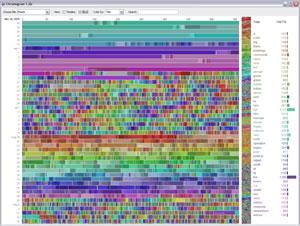Sometimes we forget that
data science is (a) a relatively new discipline and (b) a science. While scores of blogs and books are dedicated to helping data scientists achieve success, they often focus on the importance of “clear communication” and “understanding the business,” all while neglecting some of the basic precepts that make data scientists valuable in the first place. We learned this when we set out to chart a typical day in the life of a data scientist. As it turns out, a typical day involves a lot more than gleaning trends from data, connecting those insights with business needs, and communicating findings and recommendations to management. In this instance, our guide to data science was Anthony J. Scriffignano, Ph.D., senior vice president and chief data scientist for Dun & Bradstreet, the Short Hills, N.J.-based giant long known for its reporting on the financial health of organizations of all sizes. D&B has begun positioning itself as a company that “grows the most valuable relationships in business by uncovering truth and meaning from data.” In other words, it’s not just about P&Ls and debt levels anymore. D&B reportedly maintains the largest commercial database in the world, containing more than 240 million company records compiled from 30,000 data sources, along with trade data from more than 1 billion accounts-receivable records. It conducts 5 million updates each day. “I take the ‘science’ in ‘data science’ very seriously,” Scriffignano said. “The scientific method is very important, which is why being a database expert isn’t the same thing as being a data scientist. At the end of the day, data scientists have to explain things. Their work has to be empirical. It has to be reproducible science.”
The Key Components of Data Science
Given his senior role, Scriffignano isn’t involved in the hiring of every one of the D&B’s data scientists. But he does have clear ideas on how the discipline should be approached, and the skills one needs in order to build a successful career. To start, he breaks data science into five parts:
Discovery: Finding new sources of data.
Curation: Connecting new data to the data the organization already has.
Synthesis: Making sense of the data and using it to tell a story while understanding its biases and uncovering new questions.
Fabrication: Packaging data so that users can hear you. In Scriffignano’s words, “making it digestible and understandable.”
Delivery: Presenting your message while being mindful of how it’s received and whether it’s understood. When working in any of those areas, data scientists should maintain an awareness of governance and quality assurance concerns. For example, when identifying new sources of information, governance requires data scientists to ask whether they have the right to use the data. QA spurs them to examine its accuracy. “Data scientists should have deep awareness of all these areas,” Scriffignano added. “Some people may be experts in certain areas, but a full data scientist is going to ask questions that go beyond siloed expertise.”
A Typical Day Looks Like This
So what does a typical day look like for a data scientist at D&B? According to Scriffignano, it involves probing to understand what questions need to be answered, learning how each particular assignment fits into the broader business context, immersing yourself in the data to develop your conclusions, and then preparing and delivering the results of your efforts. Along the way, you’ll undoubtedly discover new issues to consider and questions to address. You’ll do all that within an environment that requires you to navigate a certain number of controls, meetings and reports. “The danger of having smart people working on things is they get distracted by squirrels,” Scriffignano observed. The structure he imposes serves to keep each assignment moving forward and on target. For those aspiring to careers in data science, Scriffignano offers three pieces of advice:
First: “Be humble. Remember, you never know it all, so be inclusive. You’re not the smartest guy in the room. Play the long game.”
Second: “Teach something and learn something every day. Collaboration is important, so you should share your knowledge and be open to learning from others.”
Third: “Make new mistakes every day. Learn from what goes wrong, so you’re constantly refining your craft.”



